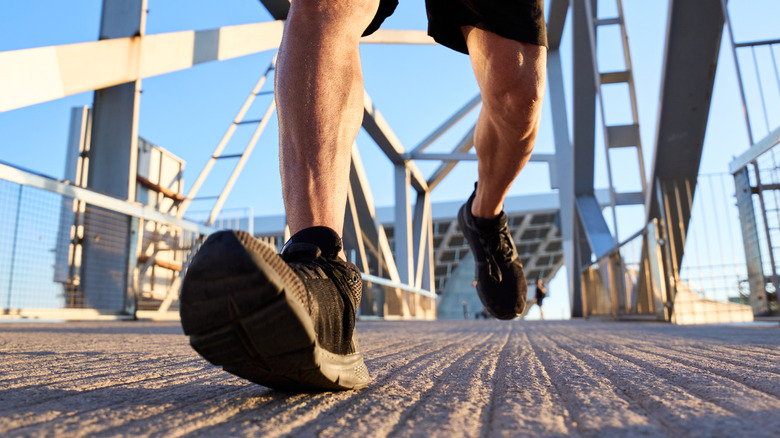This Treatment Could Help Relieve Your Arthritis Pain Without Any Medication
If you're one of the more than 54 million Americans living with arthritis pain (per the Centers for Disease Control and Prevention), you know how much it can impact your daily life. Arthritis isn't just a little joint soreness after a tough workout (here's how to tell if there's more to your joint pains than you initially thought). It's a condition that can affect mobility, independence, and overall quality of life. Of the more than 100 types of arthritis, osteoarthritis is the most common. Osteoarthritis not only wears down the cartilage in a joint but also affects the bone and connective tissue around it, making movement painful and stiff.
Many people with osteoarthritis turn to over-the-counter or prescription medications to manage their symptoms, but new research suggests there may be another option. A 2025 study in The Lancet Rheumatology found that retraining the way you walk could help reduce knee pain from osteoarthritis. With guidance from a physical therapist (or at least someone trained to observe your stride), even a small adjustment to your foot angle might lower pain, reduce stress on the joint, and potentially protect the cartilage from further damage.
Changing the angle of your foot in your walking stride can reduce osteoarthritis pain
Osteoarthritis might stem from an old sports injury, like a torn ACL, or from years of physically demanding work in jobs such as farming or construction. It can also be linked to factors like obesity, a sedentary lifestyle, or even an unhealthy diet. Whatever the cause, osteoarthritis pain can affect how you move. For example, osteoarthritis knee pain often changes the way you walk without you even realizing it.
(Here are some warning signs from your knees you shouldn't ignore.)
At the start of the study, researchers had participants with knee osteoarthritis walk on a treadmill so they could analyze their gait, or walking mechanics. Each person also underwent an MRI to measure cartilage damage. Based on the gait analysis, some participants were instructed to slightly adjust their foot angle — either outward or inward — to see which position best reduced stress on the knee. A control group, on the other hand, was told to keep walking as they normally would.
Those who practiced the foot-angle adjustment did so in the lab for six weeks, long enough for the change to start feeling natural. After a year, this group reported pain relief on par with taking a pain reliever. One participant shared their excitement that the improvement came without relying on drugs or devices. "It's just a part of my body now that will be with me for the rest of my days, so I'm thrilled with it," the participant said in a news release.

